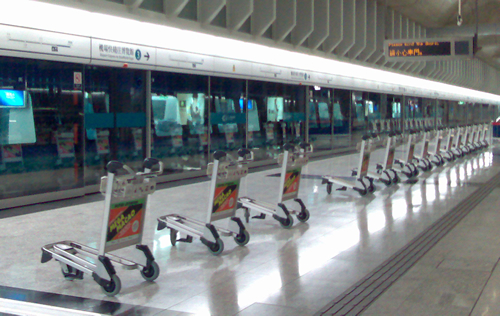Bubblegum generation presents a compelling model for Apple’s iPhone strategy:
1) Pick an industry which sucks (ie, imposes significant nuisance costs/menu costs/externalities on consumers)
2) Redress the imbalance by making something consumers love
3) …Which disrupts the long-standing industry equilibrium, and shifts market power
4) Use said market power to redesign (a hyperefficient) value chain
Don’t think that organisations in industries that suck don’t aspire to “do an iPod”. Go to any proposition development or product strategy workshop and it won’t be long before someone is mentioning Apple products. Yet all too often they fail to do anything truly revolutionary; they end up doing something different rather than “Redress(ing) the imbalance by making something consumers love”.
Do customers want something that is different or something that is just better?
Interestingly, little functionally in the iPhone is new. Like every other phone on the market it makes phone calls, sends messages, receives emails, takes photos and allows users to listen to music. Nothing different or new there… other than being better than every other phone on the market.
What Steve Jobs espouses is the experience of the phone. He says “So, we’re going to reinvent the phone. Now, we’re going to start with a revolutionary user interface… Now, what’s the killer app? The killer app is making calls! It’s amazing, it’s amazing how hard it is to make calls on most phones.”
He’s not looked to do anything radically different, rather do it radically better.
So how do you bring revolution to your product set? Rather than trying to be different, why not try to better. Make something that consumers love?
Take a leaf from the Apple book and focus upon the experience. Design and attention to detail are critical. Moving beyond purely functional and satisfying products to crafting experiences that engage the emotions. In agile product development it is often easy to focus upon delivering functionality that is perceived to deliver business benefit, yet end up with a mediocre product that has little resemblance to the original idea it was meant to become. Incremental delivery is a key feature of agile; it means you get stuff out there early and often. The challenge is to identify what that stuff is. To make something that consumers love using the agile approach, in addition to great developers and focussed project management, you need three people;
1. A passionate sponsor who has a dream and a vision and can articulate that to the team, banishing mediocrity from the outset
2. A business analyst who will help the team slice the functionality according to consumer needs and desires; that take the consumer of the journey they want to travel, not a predefined route that constrained to picking those features that eventually will deliver greatest value.
3. A customer experience architect, interaction designer or graphically minded usability dude who can champion the product aesthetic and usability.
Get them on your side and maybe you might be taking the first step on developing a better gizmo that your consumers will love, and sleep outside your retail outlet for hours to buy one.
